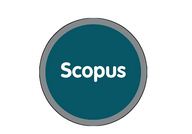Basicity and Nucleophilicity Effect in Charge Transfer of AlH3-Base Adducts: Theoretical Approach
| Attachment | Size |
|---|---|
| 1.23 MB |
[1] Hankinson, D.J.; Almlöf, J.; Leopold, K.R. A Direct Comparison betweenStructure Correlations and Reaction Paths. J. Phys. Chem. 1996, 100, 6904-6909.https://doi.org/10.1021/jp960353d
https://doi.org/10.1021/jp960353d
[2] Scheiner, S. Understanding Noncovalent Bonds and their Controlling Forces. J. Chem. Phys. 2020, 153, 140901. https://doi.org/10.1063/5.0026168
https://doi.org/10.1063/5.0026168
[3] Brown, T.; LeMay, H.; Bursten, B.; Murphy, C.;Woodward, P.; Stoltzfus, M. Chemistry: The Central Science; Pearson Prentice Hall, 2005.
[4] Swain, C.G.; Scott,C.B. Quantitative Correlation of Relative Rates. Comparison of Hydroxide Ion with Other Nucleophilic Reagents toward Alkyl Halides, Esters, Epoxides and Acyl Halides. J. Am. Chem. Soc. 1953, 75, 141-147.https://doi.org/10.1021/ja01097a041
https://doi.org/10.1021/ja01097a041
[5] Pearson, R.G.; Sobel, H.; Songstad, J. Nucleophilic Reactivity Constants toward Methyl Iodide and Trans-Dichlorodi (Pyridine) Platinum (II). J. Am. Chem. Soc. 1968, 90, 319-326. https://doi.org/10.1021/ja01004a021
https://doi.org/10.1021/ja01004a021
[6] Gupta, K.; Roy, D.R.; Subramanian, V.; Chattaraj, P.K. Are Strong Brønsted Acids Necessarily Strong Lewis Acids?J. mol. Struc.-THEOCHEM2007, 812, 13-24. https://doi.org/10.1016/j.theochem.2007.02.013
https://doi.org/10.1016/j.theochem.2007.02.013
[7] Geerlings, P.; De Proft, F.; Langenaeker, W. Conceptual Density Functional Theory. Chem. Rev. 2003, 103, 1793-1874. https://doi.org/10.1021/cr990029p
https://doi.org/10.1021/cr990029p
[8] Forgacs, G.; Colonits, M.; Hargtitai, I. The Gas-Phase Mole-cular Structure of 1-Fluorosilatrane from Electron Diffraction. Struct. Chem. 1990, 1, 245-250.https://doi.org/10.1007/BF00674268
https://doi.org/10.1007/BF00674268
[9] Rad, A.S.; Shadravan, A.; Soleymani, A.A.;Motaghedi, N. Lewis Acid-Base Surface Interaction of Some Boron Compounds with N-Doped Graphene; First Principles Study.Curr. Appl. Phys. 2015, 15, 1271-1277. https://doi.org/10.1016/j.cap.2015.07.018
https://doi.org/10.1016/j.cap.2015.07.018
[10] Aichi, M.; Hafied, M.; Dibi, A. Theoretical Study of Pentava-lent Halosiliconates: Structure and Charge Delocalization.J. Struct. Chem. 2021, 62, 824-834. https://doi.org/10.1134/S0022476621060020
https://doi.org/10.1134/S0022476621060020
[11] Adams, R.D.; Captain, B.; Fu W.; Smith, M.D. Lewis Ac-id−Base Interactions between Metal Atoms and Their Applications for the Synthesis of Bimetallic Cluster Complexes. J. Am. Chem. Soc. 2002, 124, 5628-5629. https://doi.org/10.1021/ja017486j
https://doi.org/10.1021/ja017486j
[12] Jensen, W. The Lewis Acid-Base Concepts: An Overview; John Wiley Sons: New York, 1982.
[13] Poleshchuk, O.K.; Branchadell, V.; Fateev, A.V.; Legon, A.C. SO3 Complexes with Nitrogen Containing Ligands as the Object of Nuclear Quadrupole Interactions and Density Functional Theory Calculations. J. Mol. Struc.-THEOCHEM2006, 761, 195-201. https://doi.org/10.1016/j.theochem.2005.12.032
https://doi.org/10.1016/j.theochem.2005.12.032
[14] Poleshchuk, O.K.; Branchadell, V.; Brycki, B. HFI and DFT Study of the Bonding in Complexes of Halogen and Interhalogen Diatomics with Lewis Base. J. Mol. Struc.-THEOCHEM2006, 760, 175-182. https://doi.org/10.1016/j.theochem.2005.10.016
https://doi.org/10.1016/j.theochem.2005.10.016
[15] Wiśniewski, M.; Gauden, Pearson's, P.A. Hard-Soft Acid-Base Principle as a Means of Interpreting the Reactivity of Carbon Materials. Adsorpt. Sci. Technol. 2006, 24, 389-402. https://doi.org/10.1260/026361706779849744
https://doi.org/10.1260/026361706779849744
[16] Fukui, K.; Yonezawa, T.; Shingu, H. A Molecular Orbital Theory of Reactivity in Aromatic Hydrocarbons.J. Chem. Phys. 1952, 20, 722. https://doi.org/10.1063/1.1700523
https://doi.org/10.1063/1.1700523
[17] Parr, R.G.; Szentpaly, L.V.; Liu, S. Electrophilicity Index.J. Am. Chem. Soc.1999, 121, 1922-1924. https://doi.org/10.1021/ja983494x
https://doi.org/10.1021/ja983494x
[18] Parr, R.G.; Pearson, R.G. Absolute Hardness: Companion Parameter to Absolute Electronegativity.J. Am. Chem. Soc.1983, 105, 7512-7516. https://doi.org/10.1021/ja00364a005
https://doi.org/10.1021/ja00364a005
[19] Senet, P. Chemical Hardnesses of Atoms and Molecules from Frontier Orbitals. Chem. Phys. Lett. 1997, 275, 527-532. https://doi.org/10.1016/S0009-2614(97)00799-9
https://doi.org/10.1016/S0009-2614(97)00799-9
[20] Gázquez, J. L.; Cedillo, A.; Vela, A. Electrodonating and Electroaccepting Powers. J. Phys. Chem. A2007, 111, 1966-1970. https://doi.org/10.1021/jp065459f
https://doi.org/10.1021/jp065459f
[21] Domingo, L.R.; Chamorro, E.; Pérez, P.J. Understanding the Reactivity of Captodative Ethylenes in Polar Cycloaddition Reac-tions. A Theoretical Study. J. Org. Chem. 2008, 73, 4615-4624. https://doi.org/10.1021/jo800572a
https://doi.org/10.1021/jo800572a
[22] Lewis, G.N. Valence and the Structure of Atoms and Mole-cules, Chemical Catalog Company. New York, 1923.
[23] Abboud, J.-L.M.; Alkorta, I.; Dávalos, J.Z.; Gal, J.-F.; Herre-ros, M.; Maria, P.-C.; Mó, O.; Molina, M.T.; Notario, R.; Yáñez, M. The P4•••Li+ Ion in the Gas Phase: A Planetary System. J. Am. Chem. Soc. 2000, 122, 4451-4454. https://doi.org/10.1021/ja9937324
https://doi.org/10.1021/ja9937324
[24] Cohen, A.; Mori-Sánchez, P.; Yang, W. Challenges for Density Functional Theory. Chem. Rev. 2012, 112, 289-320. https://doi.org/10.1021/cr200107z
https://doi.org/10.1021/cr200107z
[25] Frisch, M.J.; Trucks, G.W.; Schlegel, H.B.; Scuseria, G.E.; Robb, M.A.; Cheeseman, J.R.; Scalmani, G.; Barone, V.; Petersson, G.A.; Nakatsuji, H. et al. Gaussian 09: Gaussian Inc, Wallingford CT, 2016.
[26] Salvatori, T.; Dozzi, G.; Cucinella S. Synthesis of N-(Dimethylamino)propyliminodialanes. Inorganica Chim. Ac-ta1980,38, 263-265. https://doi.org/10.1016/S0020-1693(00)91970-4
https://doi.org/10.1016/S0020-1693(00)91970-4
[27] Arnett, E.M.; Quirk, R.P.; Burke, J.J. Weak Bases in Strong Acids. III. Heats of Ionization of Amines in Fluorosulfuric and Sulfuric Acids. New General Basicity Scale. J. Am. Chem. Soc.1970, 92, 1260-1266. https://doi.org/10.1021/ja00708a026
https://doi.org/10.1021/ja00708a026
[28] Gold, V. Glossary of Terms Used in Physical Organic Chemistry. Pure Appl. Chem. 1983, 55, 1281-1371. https://doi.org/10.1351/pac198355081281
https://doi.org/10.1351/pac198355081281
[29] Gal, J.F.; Maria, P.C.; Raczynska, E.D. Thermochemical Aspects of Proton Transfer in the Gas Phase. J. Mass Spectrum. 2001, 36, 699-716. https://doi.org/10.1002/jms.202
https://doi.org/10.1002/jms.202
[30] Padmaja, L.; Ravikumar, C.; Sajan, D. Density Functional Study on the Structural Conformations and Intramolecular Charge Transfer from the Vibrational Spectra of the Anticancer Drug Com-bretastatin-A2. J. Raman Spectroscopy2009, 40, 419-428. https://doi.org/10.1002/jrs.2145
https://doi.org/10.1002/jrs.2145
[31] Depmeier, W.; Schmid, H.; Setter, N.; Werk, M.L. Structure of cubic Aluminate Sodalite, Sr8[Al12O24](CrO4)2. Acta Cryst. 1987, C43, 2251-2255 https://doi.org/10.1107/S0108270187088188
https://doi.org/10.1107/S0108270187088188
[32] Fiacco, D.L.; Mo, Y.; Hunt, S.W.; Ott, M.E.; Roberts, A.; Leopord, K.R. Dipole Moments of Partially Bound Lewis Ac-id−Base Adducts. J. Pys. Chem A2001, 105, 484-493. https://doi.org/10.1021/jp0031810
https://doi.org/10.1021/jp0031810
[33] Weinhold, F. Natural Bond Orbital Methods. In Encyclopedia of Computational Chemistry, vol.3; John Wiley & Sons, Inc.: New York, 1998.












